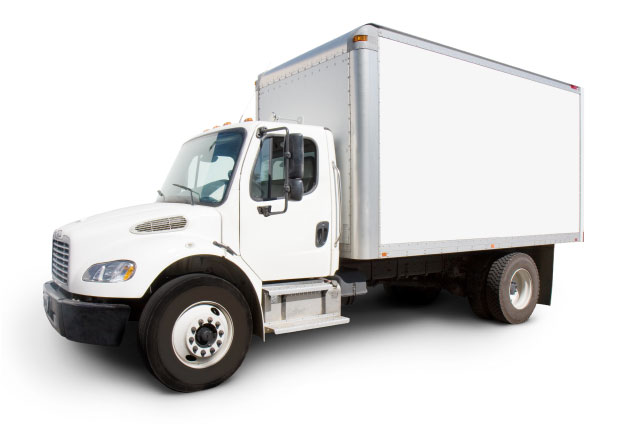Mastering Solo Lifting Techniques: A Guide to Moving Heavy Objects Safely
Posted on 11/06/2025
Mastering Solo Lifting Techniques: A Guide to Moving Heavy Objects Safely
When it comes to moving heavy objects alone, safety and technique are essential. Whether you're rearranging your furniture, hauling construction materials, or helping someone move, mastering solo lifting techniques can reduce the risk of injury and make the job much more manageable. If you've ever struggled with shifting bulky items by yourself, this comprehensive guide will equip you with the tips, tricks, and expert advice you need to move heavy objects safely and effectively.
Why is Safe Lifting Important?
Every year, thousands of people suffer from strains, sprains, and serious injuries due to improper lifting. Lower back pain is one of the most common consequences of careless heavy lifting, often resulting in weeks or even months of discomfort. Understanding and applying safe lifting techniques for solo movers not only protects your body from harm but also makes your tasks smoother and more efficient.

Understanding Body Mechanics: The Foundation of Safe Solo Lifting
At the core of solo heavy object lifting is correct body mechanics. This involves more than pure strength; it's about using your body in the smartest way possible to distribute weight and minimize stress on your muscles and joints.
- Keep the load close: The farther the object is from your body, the more strain it puts on your back and arms.
- Engage your legs: The muscles in your legs are far stronger than those in your back. Use a squatting motion to lift rather than bending at the waist.
- Maintain a neutral spine: Avoid hunching over. Keep your back straight and shoulders back, acting as a stable column.
- Lift smoothly: Jerky movements can result in strains or losing grip, so always lift in a slow, controlled motion.
Pro Tip: Listen to Your Body
If you start to feel pain or excessive fatigue, don't ignore the warning signs. Always rest and assess your technique if something doesn't feel right. It's better to take an extra minute adjusting than to risk a serious injury.
Preparation Is Key: Plan Before You Lift
Proper planning is a cornerstone of solo lifting techniques. Before you attempt any solo move involving a heavy object, follow these steps to ensure a smooth process:
- Assess the Object: Know the weight and dimensions. Will you need to dismantle it for easier handling?
- Clear the Path: Remove any obstacles in your route to prevent tripping or getting stuck while carrying the object.
- Check for Grips: Find handholds, edges, or utilize straps to maximize grip.
- Wear Proper Attire: Wear shoes with non-slip soles and comfortable clothing to allow free movement.
Top Solo Lifting Techniques to Move Heavy Objects Safely
No matter your strength level, employing the right technique can make even the heaviest job manageable. Below, we discuss some of the most effective solo lifting strategies for moving large or awkward items:
1. The Classic Squat Lift
This time-tested method maximizes leg power and minimizes back strain.
- Stand with feet shoulder-width apart.
- Get as close to the object as possible.
- Squat down, keeping your back straight and chest up.
- Grip the object securely (underneath if possible).
- Straighten your legs to lift, keeping the object close to your body.
- Reverse the process to lower the item gently.
2. The Diagonal or Pivot Lift
When space is limited, or you need to turn while lifting, using a pivot movement is essential:
- Begin in a squat position with your feet angled towards the direction of movement.
- Lift using your legs and rotate your hips rather than twisting your spine.
- Always move your feet to turn rather than twisting at the waist.
3. The Push-Pull Method
Sometimes, especially with heavy furniture or appliances, it's safer to push or pull than to lift. Here's how to maximize effectiveness:
- Ensure the path is clear and the object will not tip over.
- Use your legs and body weight to generate power, not just your arms.
- For extra heavy items, slide a piece of cardboard or furniture sliders underneath to reduce friction.
Tip: Pushing is generally less stressful than pulling because it encourages a more upright posture and utilizes larger muscle groups.
4. The Shoulder Carry Technique
For items like bags of concrete, lumber, or similar elongated objects, carrying on the shoulder spreads weight more evenly:
- Lift one end onto your bent knee.
- Slide the object up your thigh and onto your shoulder in a smooth motion while keeping your back straight.
- Stabilize the load with one or both hands as you walk.
5. Combination Moves and Step-by-Step Transports
If the journey is long or the object is especially heavy, consider moving it in stages. Lift the item onto an intermediate support (like a chair or box), rest briefly, and then continue.
- This reduces fatigue and makes the process less overwhelming.
- It also increases safety by giving you a way to readjust your grip and posture periodically.
Leveraging Equipment: The Smart Solo Lifter's Advantage
There's no shame in using a little help! Various tools exist specifically for solo heavy lifting and can be a game-changer:
- Furniture Sliders: Slip these under corners to glide heavy items across carpet or tile with ease.
- Dollies and Hand Trucks: Ideal for boxes, appliances, or stacked loads--just make sure to secure the items first with straps or bungees.
- Lifting Straps and Harnesses: Distribute weight between your shoulders and legs, diminishing pressure on your back.
- Ramps: Great for pushing or pulling heavy items over thresholds or up onto vehicles.
Never underestimate how much easier--and safer--these tools can make your solo moving task!
Special Challenges: Navigating Stairs and Tight Spaces
Moving heavy objects up or down stairs or through narrow doorways is one of the trickiest solo lifting challenges. Here are essential techniques to avoid injury and property damage:
- For stairs: Use a hand truck with stair-climbing wheels or slide the item gently one step at a time. Always keep the item below you as you descend (never lean over it).
- For narrow spaces: Walk sideways or rotate the object to its narrowest dimension. Take your time and anticipate any snags.
- Disassemble if possible: Many large items can be taken apart for easier, safer transport.
Prepare ahead and don't rush - these situations are where most lifting injuries occur during solo moves.
Protecting Your Body: Injury Prevention When Lifting Alone
Physical preparation is as important as technique. Staying limber and strong prevents injuries during solo heavy lifting:
- Warm up: Before tackling any serious lift, spend five minutes stretching your hamstrings, lower back, and shoulders.
- Strengthen your core: A strong abdomen stabilizes your spine and helps keep you balanced under load.
- Don't rush: Move slow and steady. Fatigue causes accidents, so take breaks as needed.
Warning Signs and When to Ask for Help
Even with perfect technique, some items may simply be too heavy or unwieldy for solo transportation. Never risk your health for the sake of pride or time. Stop and seek help OR call a professional if:
- You feel sudden, sharp pain.
- The item is beyond your reasonable ability to control.
- The path is unsafe or too narrow.
- The object is especially valuable or irreplaceable.
Post-Lift Best Practices: Wrapping Up Safely
Once you've moved your heavy item, be sure to follow these essential after-lift steps:
- Stretch again: Loosen muscles and reduce soreness by stretching your back, arms, and legs.
- Hydrate: Lifting can be surprisingly strenuous; replace lost fluids.
- Ice sore spots: If you notice swelling or discomfort, apply ice packs to affected areas for 20 minutes out of every hour.
Tip: Attending to minor aches promptly helps prevent more serious issues later!

Bonus: Frequently Asked Questions About Solo Lifting and Moving Heavy Items
How can I lift a heavy object by myself without equipment?
Use the leg-powered squatting technique, keep the item close to your body, and lift in slow, controlled movements. For sliding, place a towel, blanket, or piece of cardboard underneath for easier movement. Don't be afraid to break the process into stages!
What are the most common lifting mistakes made by solo movers?
- Bending at the waist instead of at the knees
- Trying to twist while lifting
- Lifting loads that are too far from the body
- Not planning the movement path in advance
- Ignoring fatigue or pain signals
What should I do if I pull a muscle while moving something heavy?
Stop immediately, rest, and apply ice to the affected area. If the pain persists for more than a few days or you experience severe discomfort, consult a medical professional.
Conclusion: Become a Master of Solo Heavy Lifting!
Mastering solo lifting techniques is about more than brute force--it's about smart movement, proper preparation, and using tools and aids where possible to protect your body. By investing time in learning and applying proven safety strategies, you can move heavy objects alone with confidence and without regret.
Remember, when in doubt, always prioritize your safety--no single item is worth risking your health. Use these expert tips and techniques to become a skilled, efficient, and safe solo lifter!
Want to learn more?
- Check our in-depth guides on proper furniture moving techniques
- Read our article on essential equipment for single-person moves
- Subscribe for more expert tips on DIY safety and efficiency





